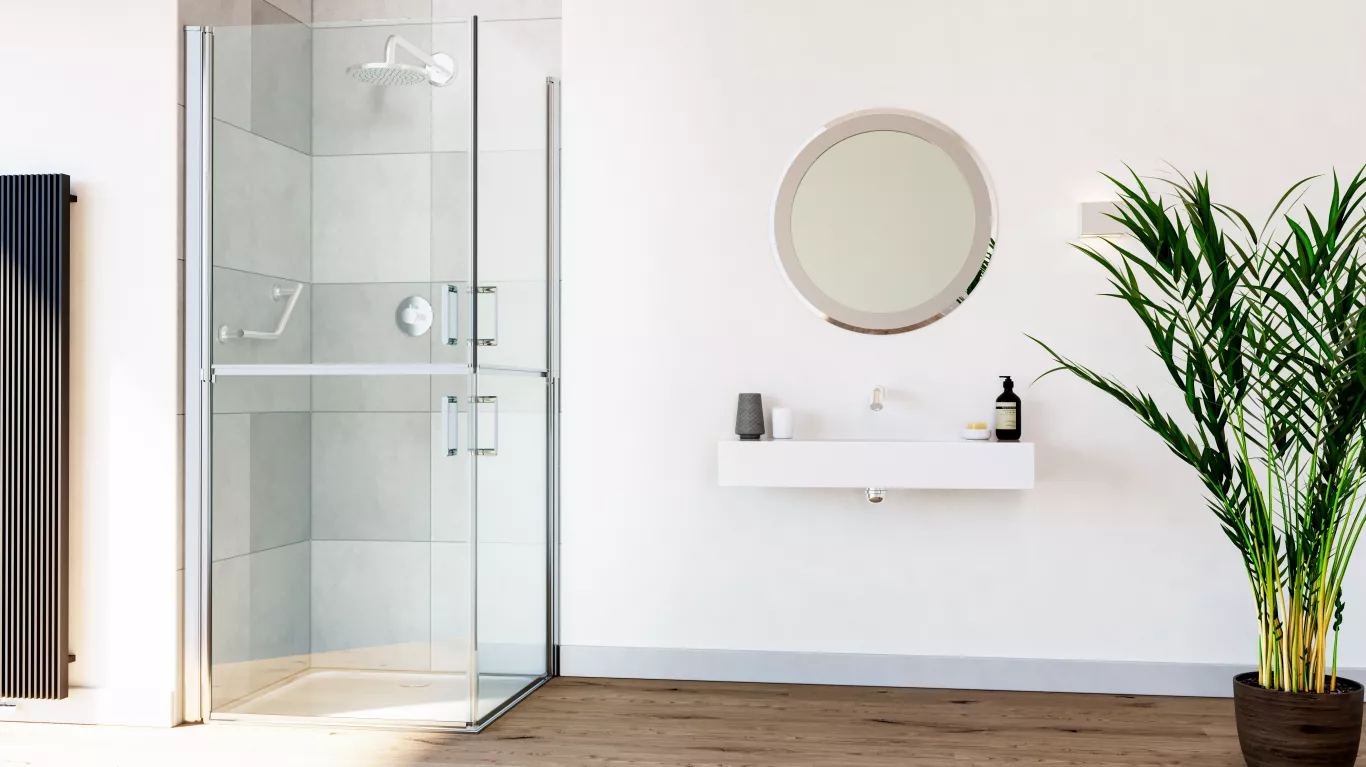Home / Inspiration /
Accessible shower solutions and accessories for inclusive bathrooms
Share

Showering is an essential daily activity for many people, but for some, it can be a difficult and sometimes dangerous task. This is especially true for individuals with disabilities, who may face challenges when it comes to accessing traditional shower enclosures.
One of the most important aspects of an accessible shower is the door. Traditional hinged or sliding shower doors can be difficult for people with mobility issues to open and close.
However, with the increasing awareness of the importance of inclusivity, there are now a variety of accessible shower solutions available to make showering a safe and enjoyable experience for everyone.
Wetrooms
Transforming a bathroom into a wetroom is a visually appealing solution that can greatly increase accessibility. By using glass panels, the showering area can be tailored to meet the specific needs of the individual. These designs eliminate potential trip hazards by featuring sunken trays or omitting them altogether, making it a safer option for individuals with mobility challenges, while still keeping a sleek and uncluttered appearance.

Half-height doors
Half-height corner doors are another good option for people with mobility issues such as those using wheelchairs or walkers. They are suitable for installation on a tiled wetroom floor or a countersunk shower tray, meaning there is no step-up required to enter. On the flair frameless corner entry half-height door pictured above, both doors open fully back to the walls giving extra-generous access to enter and exit the shower safely. Due to their lower height, they also allow for easy assistance from a carer than a regular shower enclosure.

Accessories
Another important aspect of accessible showers is the use of grab bars and other safety accessories. Grab bars can provide added stability and support for people with mobility issues, allowing them to move around safely and comfortably in the shower. There are also shower seats, which can be a great option for those who have difficulty standing for long periods of time.
In addition to the physical aspects of accessible showers, it is also important to consider the layout and design of the bathroom. For example, making sure there is enough space for wheelchair users to manoeuvre around the shower and bathroom, and ensuring that the shower is located close to the toilet for easy access.
The cost of carrying out an accessibility upgrade to your bathroom can add up. However, there are various grants available to assist with these expenses. For detailed information on what may be available, visit citizensinformation.ie for Ireland or citizensadvice.org.uk for the UK.
With a variety of options available, it is now possible for individuals with disabilities to enjoy the benefits of showering with safety, comfort, and independence.